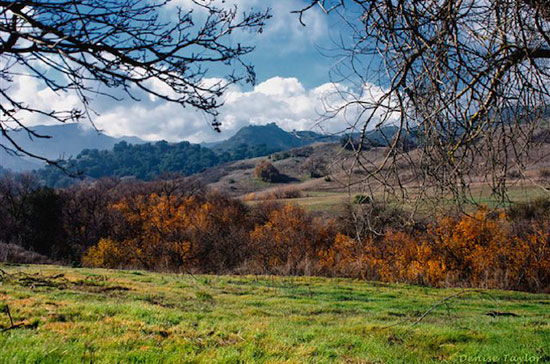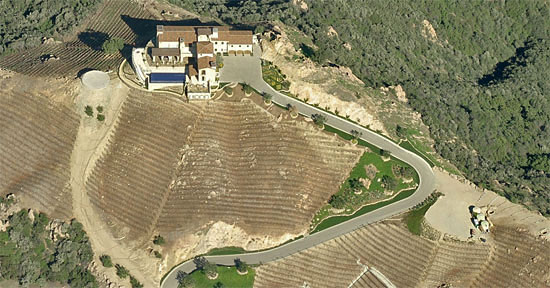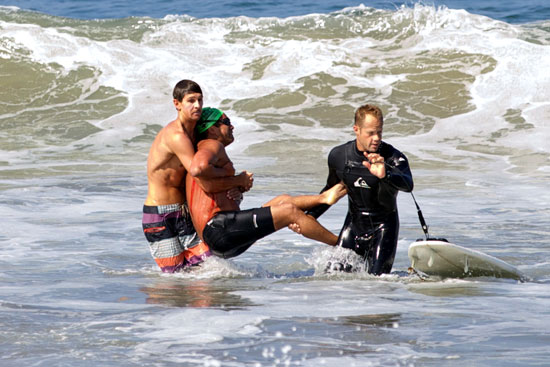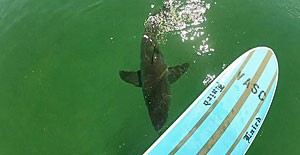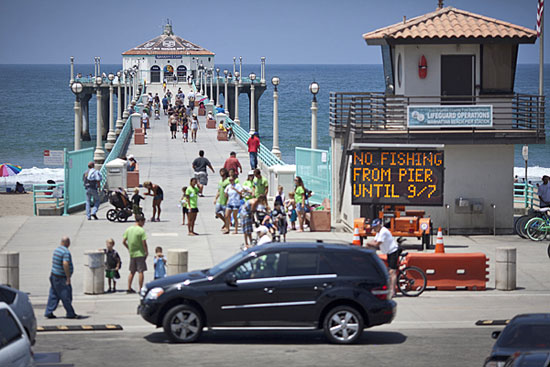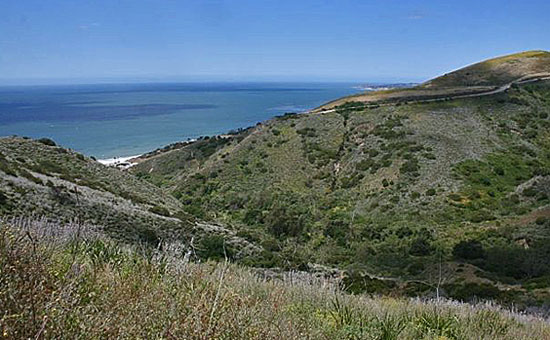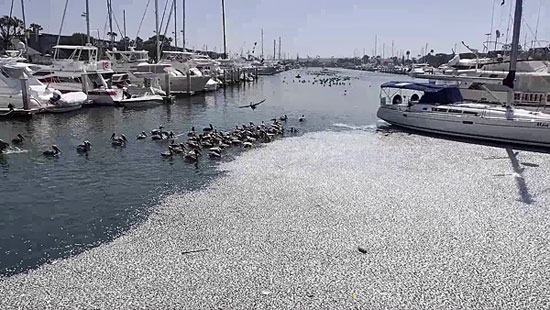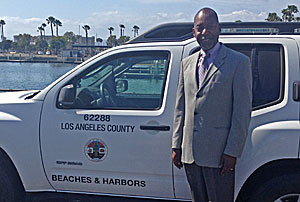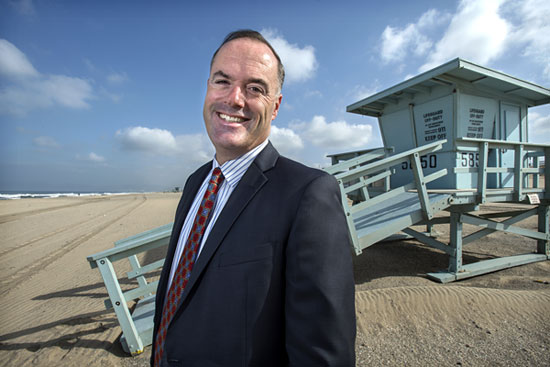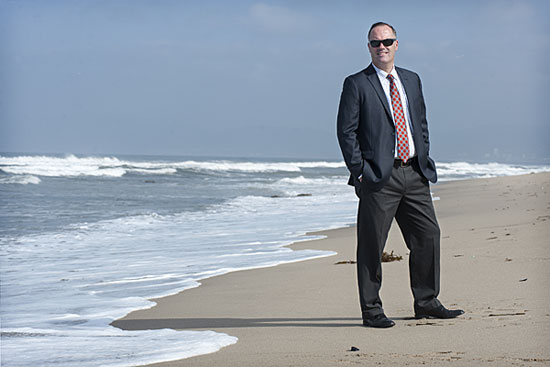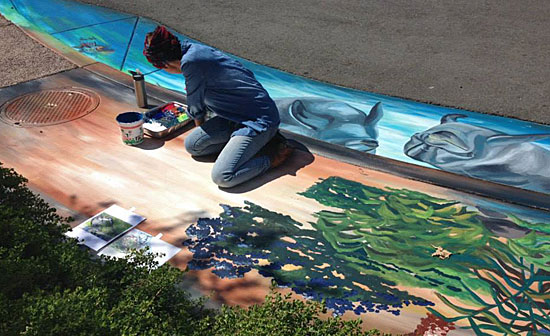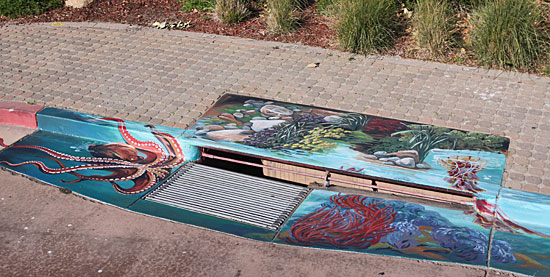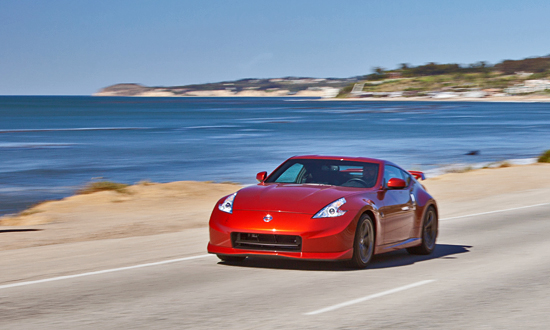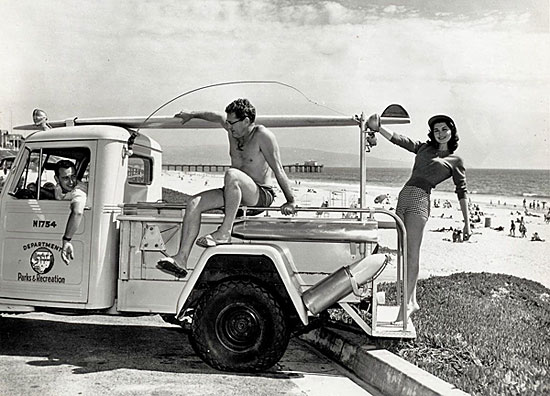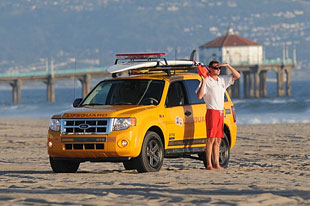A tribute big as the Ponderosa
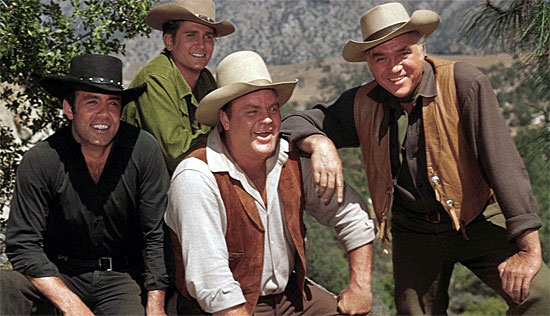
Blocker’s “Bonanza” co-stars donated a beach in his honor. It’s just about ready for its closeup.
After years of navigating enough obstacles to prompt the patriarch on TV’s Bonanza to yell, “What in tarnation is going on down there?” Los Angeles County is poised to finish upgrades at Dan Blocker Beach in Malibu, though on a more modest scale than initially envisioned.
The $5.5-million project at 26200 Pacific Coast Highway included purchasing a sliver of land above the mile-long beach, where a scenic overlook is now being constructed, complete with picnic areas, parking spots and restrooms. The site also will feature, for the first time, a bronze plaque funded by fans and honoring the actor who played Hoss Cartwright on one of the longest-running and most beloved series in television history.
The overlook area will not provide direct access to the beach that bears Blocker’s name. Not only is the bluff extremely steep—30 feet high in some places—but the beach area directly below is too rocky for general use. However, beachgoers can walk onto the sand by entering at more accessible points north or south of the new overlook. Those new access ways also are being improved as part of the project.
The project should be substantially completed in time for a dedication ceremony on Nov. 14.
The late actors Michael Landon and Lorne Greene, who rose to fame as Little Joe and Ben Cartwright on Bonanza, bought and donated the beach to the state of California in 1979.
It was their way of honoring their costar and friend Blocker, after his untimely death at age 43 from a pulmonary embolism following what should have been routine surgery.
The state handed the beach over to the county in 1995.
It was designated “for public park and recreation purposes” but the public didn’t get much of a chance to enjoy it because neither the state nor the county could afford to install amenities.
In 2004, the state Coastal Conservancy awarded the county $700,000 to make the beach more accessible, but that covered only half of the price tag for improvements mandated by the Americans with Disabilities Act and various local zoning codes. The grant ended up being diverted to other, more shovel-ready projects.
Malibu City Council members, frustrated with the slow pace, sought to take over the project in 2011. But the county, which was shouldering the price tag for renovation, refused.
With no safe way to access the beach from the bluff, authorities erected an unsightly chain-link fence that discouraged, rather than encouraged, visitors.
“When we started, the site was empty,” said county Department of Public Works project manager Salim Sioufi, who oversaw the construction. “There was nothing on it.”
“Now, we’re building an area where people can sit and look at the ocean,” he added. “It’s going to be beautiful.”
The county eventually cobbled together funding from various sources, including money from the 3rd Supervisorial District, to build a space offering stunning views of the coast, picnic tables and trash receptacles, restrooms with an underground wastewater treatment system, and a parking lot with 15 spaces.
“The bluffs are very steep, so it was a very difficult place to do construction,” said Carol Baker, public information officer with the Department of Beaches and Harbors.
“We wanted to provide safe, accessible and beautiful open space but we also needed to appropriately address the challenges presented by the natural environment,” she added.
Although Bonanza, which ran for 430 episodes between 1959 and 1972, has long been off the prime time network schedule, it still has legions of fans. So does Blocker, who despite his intimidating physique—6’4”, 300-plus pounds—played the warm but gullible middle Cartwright brother who once mistook diminutive circus performers for leprechauns.
In real life, however, the Texas-born Blocker once worked as an elementary and high school English and drama teacher, and was the only member of the cast with a master’s degree. He also tried to pursue a Ph.D. until acting took up all of his time.
Carla Ledford, 56, has been watching the show ever since she was a child and continues to do so, when she’s not working in marketing for a university in Ohio.
She and fellow fans got the idea for a plaque after struggling to locate Dan Blocker Beach during a visit to Malibu in 2004.
“There was just wasn’t anything there,” Ledford said. “We drove up and down trying to find it when we finally saw a faded lifeguard tower where we could just make out the name ‘Dan Blocker Beach.’ ”
“I mean, it’s a nice beach, but…we just thought it needed something,” she added.
They took up a collection through the fan fiction website Bonanza Legacy and received donations from fans as far away as Australia, England, France, and the Netherlands.
Ledford said because she’s literally been waiting 10 years to see the plaque installed, she’s considering postponing foot surgery and flying from Ohio to California to attend the dedication ceremony.
“I’m seriously thinking about it,” Ledford said.
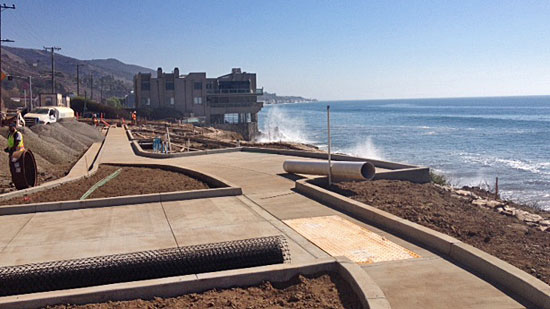
Work is underway on the new overlook as the November dedication date nears.
Posted 10/9/14

